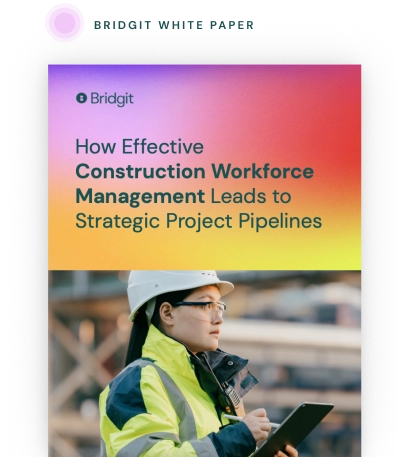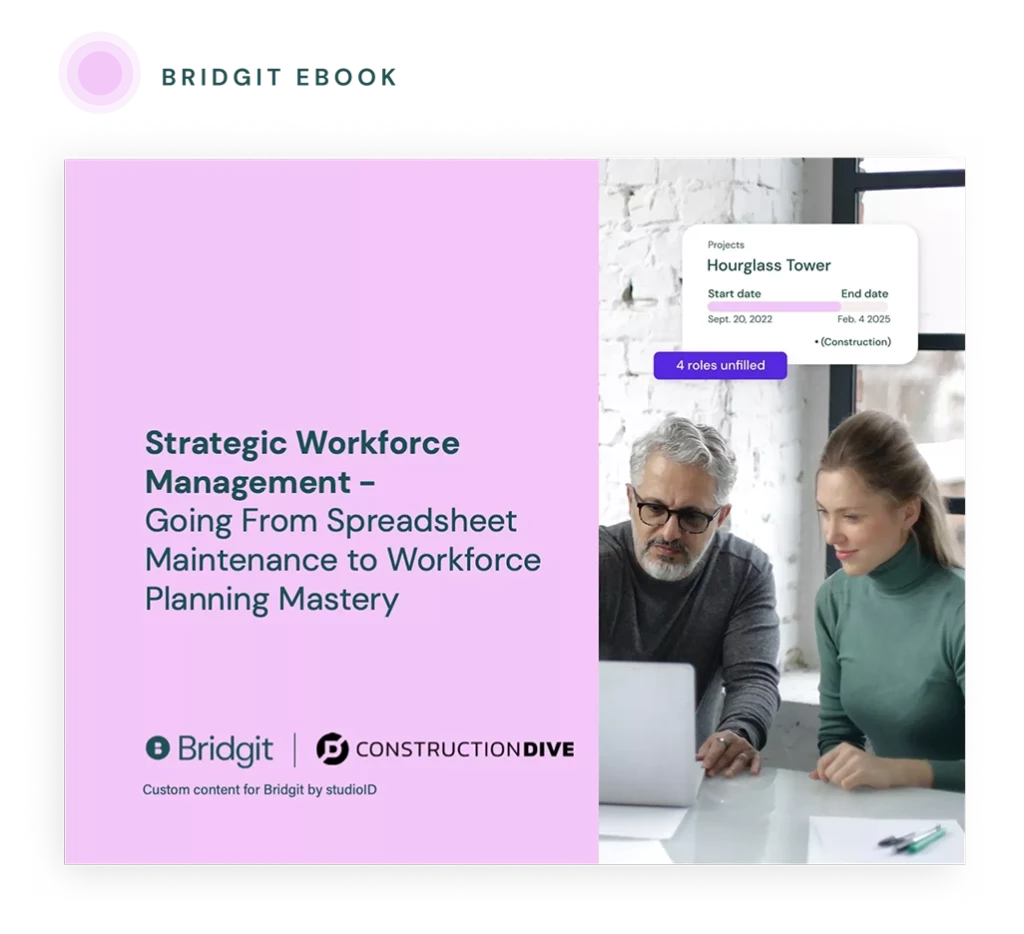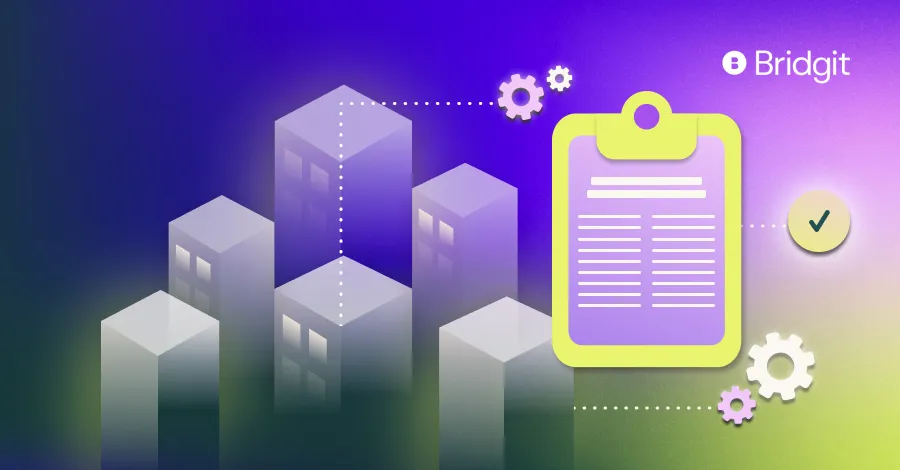Knowing how to manage a construction project efficiently makes you a very valuable asset in this productivity-focused industry. The following construction project management tips will help you (or your management team) develop in this regard, head and shoulders above those who don’t work within any particular framework.
Table of Contents
Keeping these tips in mind as you progress through your career in the industry will also help you improve your abilities and accelerate your rise to the top positions in your company. Read this article to learn more about a day in the life those in the top positions of construction and understand their day-to-day responsibilities in the organization.
How to manage a construction project like a pro
Tip #1: Track resources carefully
Without effective construction resource management, projects tend to devolve into confusion, shoddy workmanship, cost overruns, and missed deadlines.
Dedicated construction resource management software can help you track tools and personnel effortlessly and is especially useful when managing multiple construction projects. If resources are constantly unavailable to workers at critical moments, this is one construction project management tip to implement immediately.
Check out this article for some tips on improving construction labor tracking.

Use your workforce data to create a competitive advantage
Download our white paper to see how effective workforce planning can help stay ahead of labor demands and create a strategic project pipeline.
Tip #2: Collaborate and delegate
Construction projects have a near-unfathomable number of moving parts. When you’re managing multiple construction projects, having any single person keep track of everything becomes downright impossible.
This brings up the importance of delegating and collaborating effectively. One team member may pick up on something another missed, which can avoid workers feeling overwhelmed by simple mistakes that are actually the result of focusing on too many things at once.
There are many ways to promote collaboration in a construction company. One of the most powerful is to encourage recreational team-building activities outside of work hours.
Tip #3: Avoid “pointing fingers” at field workers unjustly
A common mistake in any industry is to place blame for errors solely on field workers rather than acknowledging management’s failure to implement proper procedures.
Of course, it’s not always management’s fault – and we’ll get to holding workers accountable with the next tip.
However, when looking at how to manage a construction project in the most effective manner, you need to acknowledge that repetitive errors can’t always be addressed solely by the people doing more granular work.
Follow problems up the chain of command!
Tip #4: Hold workers accountable when it is their fault
Workers occasionally do circumvent protocols laid out by management, which needs to be addressed. Set clear expectations concerning consequences for repeatedly ignoring procedures, especially as they relate to safety.
Tip #5: Implement a rigorous inspection workflow
Even on construction projects that culminate in a client-led inspection, you’d be wise to have your own quality control processes that catch issues before the customer does.
This is a very powerful construction project management tip for maintaining your company’s reputation with clients.
Tip #6: Create clear roadmaps
Routinely being caught off-guard is the antithesis of effective construction project management. As a leader, you need to always be thinking one step ahead, particularly when it comes to forecasting project delays.
The Gantt chart is a very powerful tool for facilitating foresight as it shows dependencies between different resources and tasks. If a particular item is stalling, it’s the management’s job to identify the ripple effects and create a plan to keep things moving.
Tip #7: Incorporate wiggle room into your plans as much as possible
Even with the best planning, delays do happen in construction. You can’t control things like the weather or a fellow subcontractor dropping the ball.
You can, however, recognize that these setbacks are common and account for them in your planning. The Bridgit Forecasting Dashboard will be a very powerful tool for this.
Tip #8: Take the time to develop leadership skills
As we discussed in this article, a workforce utilization rate of 100% is never the goal. Workers need time for professional development. Management is definitely included in that.
In fact, time and money spent helping your management team grow can be a phenomenal investment given how much they oversee.
Tip #9: Learn to negotiate
Negotiation is one of the key skills construction project managers need to learn. It’s not just about negotiating with clients either. There’s a never-ending give-and-take between management and those below them.
A major part of knowing how to manage a construction project efficiently is being aware of when and how to put pressure on.
Tip #10: Read contracts thoroughly, even if it seems unnecessary
It’s not uncommon for construction managers to skim through contracts, especially if the paperwork is standardized (i.e. from the American Institute of Architects).
Doing this, however, opens the company up to potential conflicts in the case of clients that belabor a specific point that was missed in the initial contract review.
Management should read contracts thoroughly and raise questions about items as necessary.
Tip #11: Keep up with the times
It’s surprising how many people working in construction management haven’t taken their processes beyond a certain era. Some in the industry are still using spreadsheets (or worse – pencil and paper) to keep track of things like worker hours.
McKinsey & Company has actually identified a lack of progress as one of the seven primary productivity lapses costing the construction industry billions of dollars annually.
Simple solutions now exist for problems that used to take construction managers hours to address. Any management team not using these solutions is doing themselves a substantial disservice.
Tip #12: Don’t undervalue relationships
Given construction’s productivity-driven nature, it’s easy to make the mistake of neglecting human connections. Construction is a very tight-knit industry, however, and burying your head in data at the expense of networking will not help your company get ahead.
Attend conferences. Pay special attention to personalized communication when managing multiple construction projects. Send important clients small tokens of your appreciation around holidays.
These things may not produce immediate results like crunching numbers or stomping out inefficiencies but they have long-term benefits.
Tip #13: Be conscious of how you deliver bad news
Construction management should, ideally, never deliver bad news to a key stakeholder without also presenting potential solutions.
The delivery of bad news also needs to be crafted based on who the responsible party is.
If you are a general contractor telling the client about a subcontractor’s severe error, you should describe measures taken to communicate the unacceptable nature of the mistake.
If the issue is your party’s fault, you need to communicate how you’ll make it right.
Tip #14: Avoid getting too deep into the weeds
A key part of effective construction project management is knowing where to focus.
Everybody plays their own role in making things happen on the job site. General laborers handle granular tasks under the eye of a foreman, who typically works under supervisors.
Wherever you fall in the chain, try not to jump further down than is necessary. You’ll lose sight of what you need to focus on.
Also, try not to drag someone above you into matters that rest squarely in your domain. Doing this too frequently suggests you’re incapable of managing your responsibilities, which is never a good message to send.
Tip #15: Be patient
While these construction project management tips will definitely go a long way towards helping you succeed, development is a process. As long as you’re making progress, be patient with yourself and your team.
There’s a lot more to construction project management than first meets the eye. Becoming adept at it requires continual learning and improvement. We hope this guide has proven useful in pushing your company’s management strategies to the next level.
If you found this useful, also check out what a concrete contractor job involves or what does a construction superintendent do.
Frequently Asked Questions
What are the six key stages of effective construction project management?
The six key stages of effective construction project management are:
- Project initiation
- Planning
- Design
- Construction
- Monitoring and controlling
- Project closeout
What are the 7 steps to project planning success for project managers?
The 7 steps to project planning success are:
- Define the project scope
- Identify key stakeholders
- Develop a detailed project plan
- Create a project schedule
- Allocate resources
- Implement risk management strategies
- Establish a communication plan
What is the best methodology for construction project management?
The best methodology for construction project management is often the Critical Path Method (CPM), which helps in scheduling project activities, identifying the longest path of tasks, and ensuring timely project completion.
How to organize a construction project?
To organize a construction project, create a detailed project plan, develop a clear schedule, allocate resources efficiently, establish a communication plan, and use project management software to track progress and manage tasks.
How to control a construction project?
Control a construction project by setting clear milestones, monitoring progress regularly, maintaining open communication with stakeholders, using project management software, and implementing quality control measures to ensure standards are met.
What are the keys to a successful construction project?
Keys to a successful construction project include effective planning, clear communication, efficient resource management, strict adherence to safety protocols, and regular monitoring and controlling of project progress.
What are the 5 essential phases of construction project management?
The 5 essential phases of construction project management are:
- Initiation
- Planning
- Execution
- Monitoring and Controlling
- Closeout
What are the four main elements to the construction management process?
The four main elements to the construction management process are:
- Planning
- Scheduling
- Budgeting
- Quality Control
What are the five processes in initiating a construction project?
The five processes in initiating a construction project are:
- Defining project goals
- Conducting a feasibility study
- Assembling the project team
- Creating a project charter
- Identifying stakeholders
What is the life cycle of a construction project?
The life cycle of a construction project includes the following phases:
- Initiation
- Planning and design
- Execution (Construction)
- Monitoring and Controlling
- Closure and handover

Looking to be more strategic with your people?
We partnered with Construction Dive to outline the steps any contractor can take to be more strategic with their workforce management.


